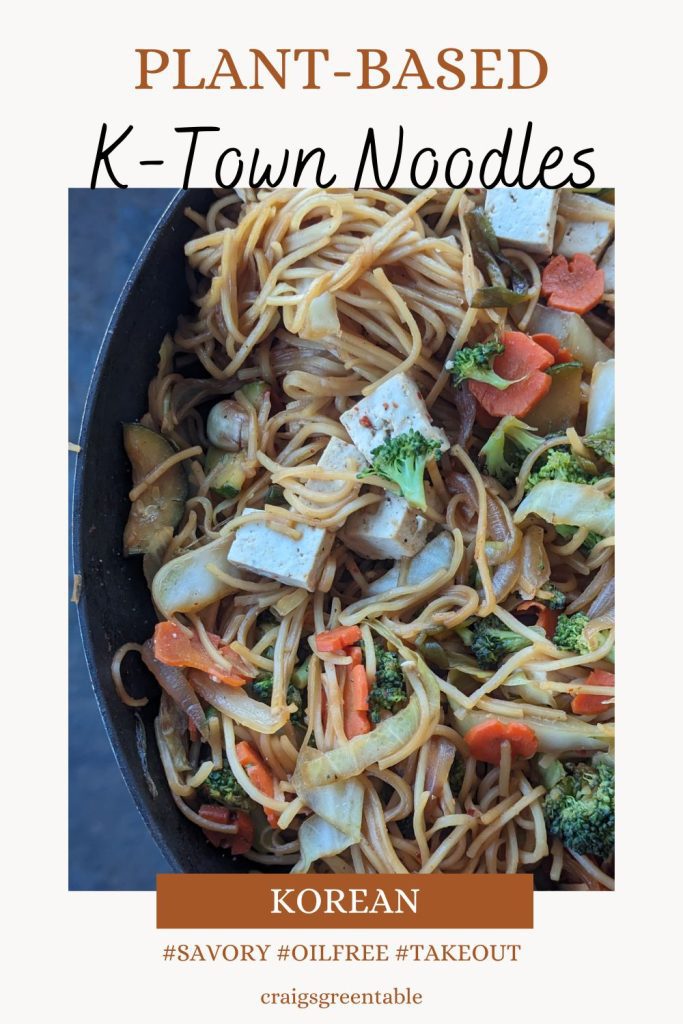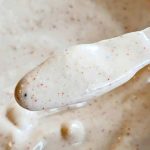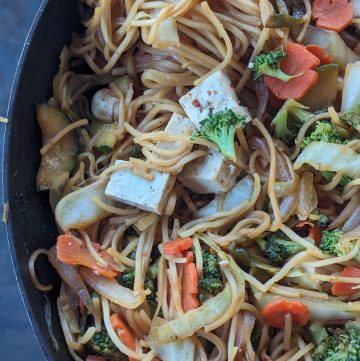
K-Town Noodles
Ingredients
K-Town Sauce
- ¼ cup low sodium soy sauce (or low sodium tamari)
- 2 tbsp maple syrup
- ¼ tsp molasses
- 2 tbsp water
- 4 cloves garlic, peeled and smashed
- ¼ tsp black pepper, ground
- 1 ½ tsp mirin
- 1 tsp freshly grated ginger or ginger paste
- 1 scallion, sliced lengthwise
Noodles
- 1/2 package Chuka Soba chow mein noodles (3 ounces, dry)
- water (for boiling)
Veggies & Tofu
- 1 carrot, sliced in ~2mm-thick rounds
- ½ cup yellow or white onion, sliced in wedges
- 2-3 cups fresh broccoli, cut in small florets
- 1 ½ cups green cabbage, in thick shreds
- ½ small zucchini (optional)
- 1 dash white pepper, ground
- ½ block firm tofu, cubed (technically, rectangular prism'd)
Instructions
K-Town Sauce
- Stir all sauce ingredients in a small saucepan over medium heat, uncovered. Bring to just below a simmer (just as you start to see a few bubbles) and turn off heat and set aside.
Noodles
- Cook noodles in boiling water for a few minutes until al dente or soft. Strain and set aside. You may want to cut noodles into 4 sections to shorten them!
Veggies & Tofu
- In a large skillet over medium heat, add broccoli, onions, and carrots. If you want to include the garlic and scallions from the sauce (not the sauce itself), add them in at this point. Sauté (with water as needed) for 5 minutes or so, then add the cabbage and optional zucchini. Finish sautéing for a few minutes until everything is tender-crisp or slightly soft.
Bringing it all Together
- Add Noodles to the veggies, then pour on about half the sauce, mix, taste, and pour on "up to" the remainder of the sauce. Add salt or MSG to taste preference.
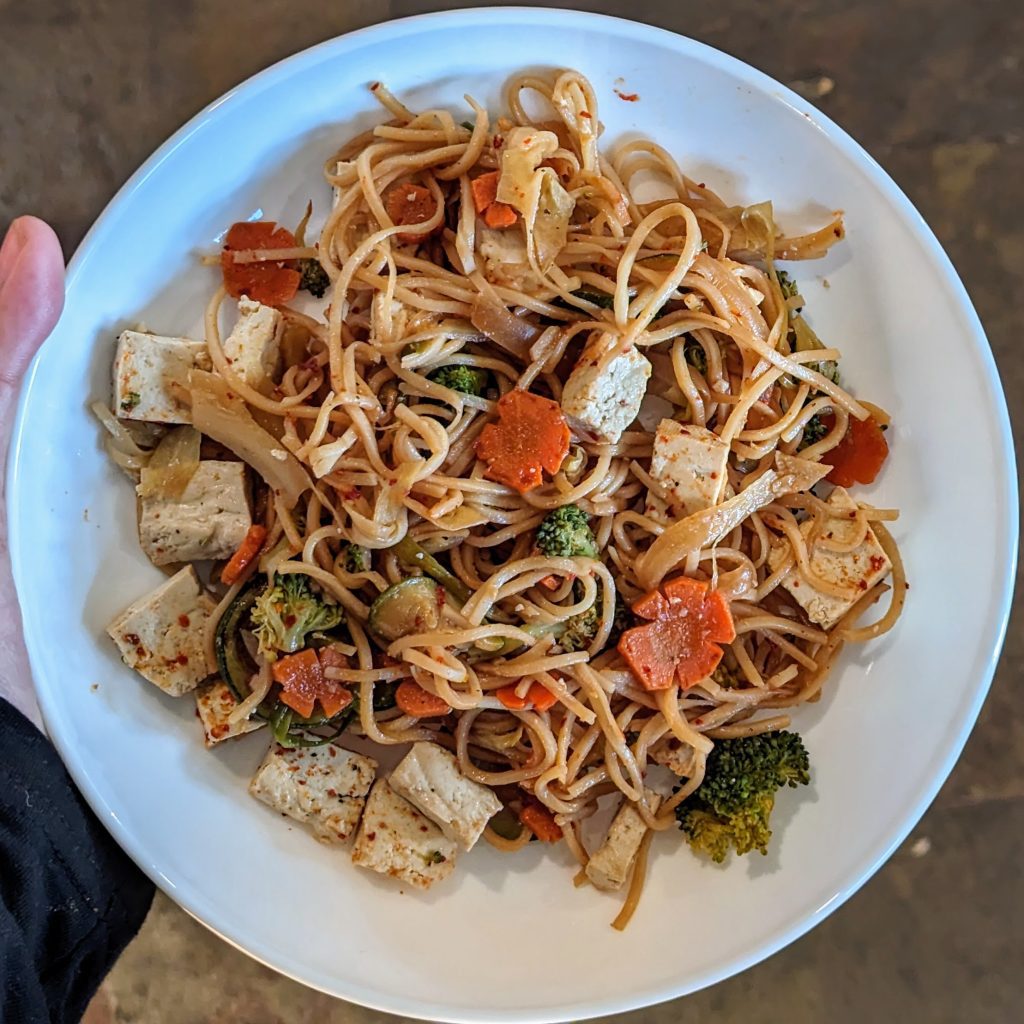
Fun in the Kitchen
I had fun with this one! I’ve been thinking about putting together a dish reminiscent of my favorite local Korean restaurant’s classic noodle dish, Noodles of Korea, in a way that’s delicious yet consistent with my dietary preferences. It’s one of those dishes where the beauty lies in its simplicity. Noodles, an assortment of fresh veggies, seasoning/sauce, tofu, and of course, served to your spice preference.

First, I nixed the original’s Yakisoba noodles. Not because Yakisoba noodles aren’t delicious, but I did want to shift away from them due to their added oil. We don’t have extensive Asian food dry goods where I live, so after looking around at a couple of grocery stores I ended up with Chuka Soba noodles. They’ve got a bit of salt in them and added yellow food coloring, so, not totally perfect, but in the right direction which is always my goal.
Next, I veggied to my preference using the same veggies I remember from the dish. I water sauté them over medium heat, covered. Try not brown them, but soften them to that tender-crisp state. Mmmm MMMM!
Then, the sauce. You can make a more natural version of brown sugar by combining just the right amounts of maple syrup and molasses. Using about 1/4 tsp molasses to about 2 tbsp maple syrup seemed to give it that desired depth without making the dish taste of molasses itself, which is too strong for nearly anything but a cookie! The rest of the sauce is an absolute party.. soy sauce, scallions, ginger, mirin, black pepper, garlic, etc. It’s SO good, and this is the part that was hardest to get “just right”. Too many times I added things like vegan oyster sauce thinking it was necessary only to muddy up the flavors beyond my liking. This sauce is thin, dark, savory, sweet, and delightful.
Finally, toppings. You could exclude one or both of these toppings, but I think excluding both gochugaru AND gochujang basically takes away the most unique of Korean flare. They’re not even that spicy when used in smaller amounts, but they certainly add depth of flavor. The only difference between mild, mild+, spicy, spicy+ and melt-your-face-off levels from the local place is the amount of Korean pepper spice used (I don’t know this as a fact, but observationally I think that’s what’s going on). If you had to pick just one, get the Korean red pepper paste. This paste, known as gochujang is by far more easily found locally. They also add sesame seeds at the local place. If you add them, I would try toasted or a blend of fresh and toasted (though I don’t find fresh sesame seeds add much flavor).
Shelf-Life
K-Town Noodles last about 2-3 days in the refrigerator before they lose their luster. They’re still good to eat after that, but unlike takeout noodles they aren’t soaked in oil, which is not only a powerful preservative but it also coats noodles and veggies which prevents sauce flavors from being absorbed which can hide them from your taste buds.
Gallery

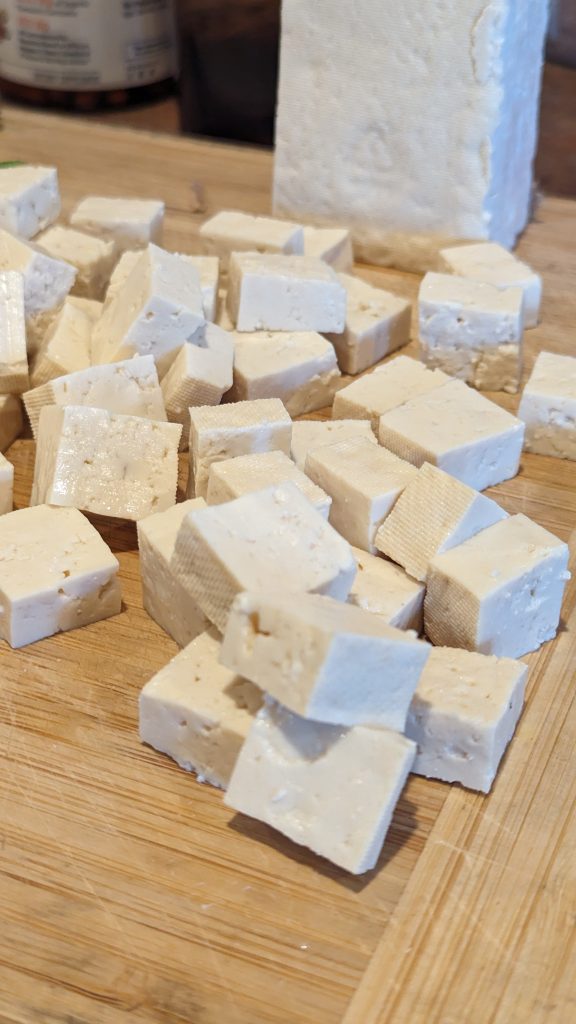
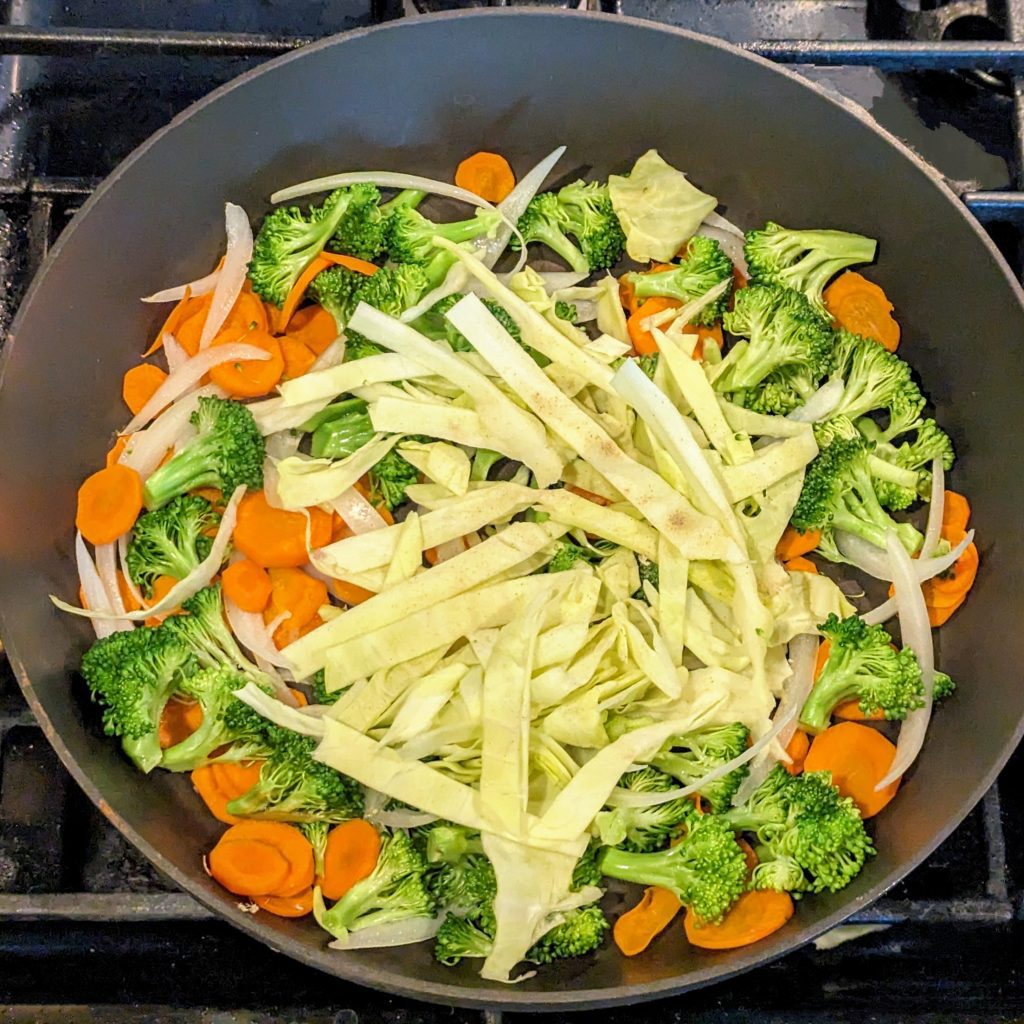
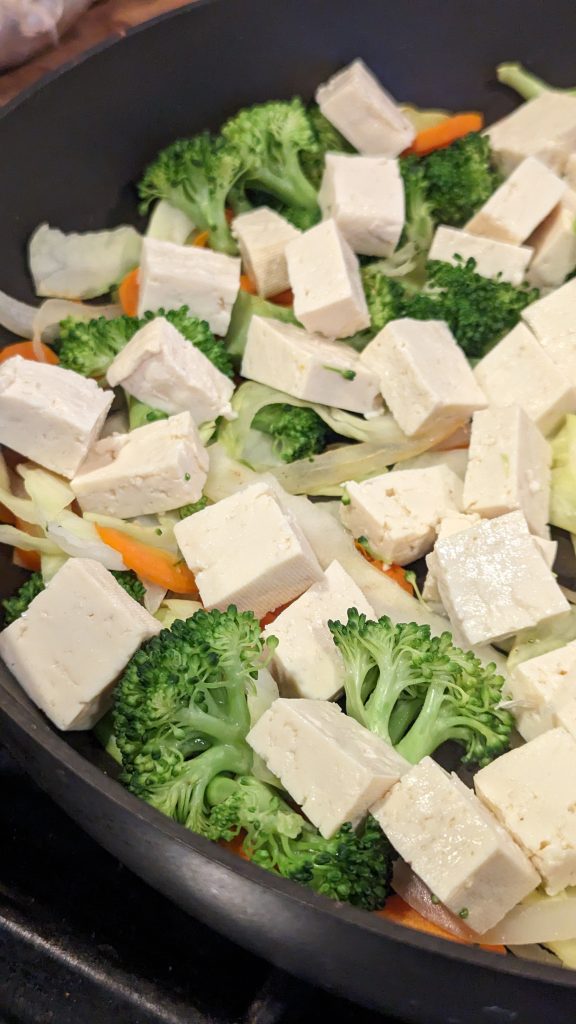
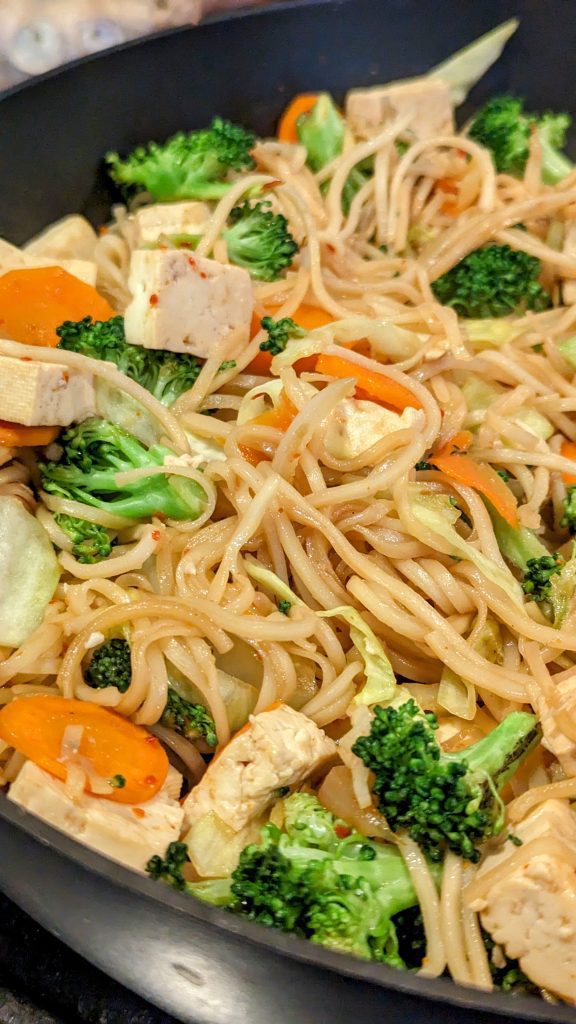
Carrot Flowers
One thing I didn’t do at first but I enjoy doing now is cutting the carrots into carrot flowers. It takes time and patience as I’m still learning this technique, but if you aren’t familiar you can watch the technique.
Pin It!
